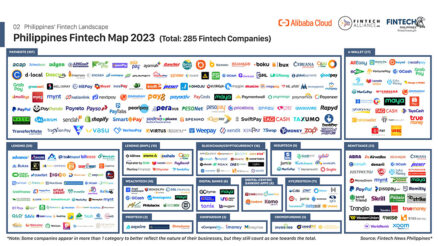In 2023, digital fraud attacks showed no signs of slowing down, with an alarming 19% increase in attack rates compared to the previous year. Despite the stabilization of automated bot attacks following the surge in 2022, the cybercrime landscape remains complex and rapidly evolving. The diversity in fraud schemes across the Asia-Pacific (APAC) region highlights the varying levels of digital maturity among different economies. Financial institutions and regulators in the region have been working relentlessly to address the growing wave of digital fraud, a challenge that has persisted from 2022 into 2023.
The LexisNexis® Risk Solutions Cybercrime Report offers a wealth of insights, derived through advanced machine learning from the world’s largest cross-industry risk intelligence network, the LexisNexis® Digital Identity Network®. The report provides businesses and policymakers with actionable data to help them navigate the chaotic fraud landscape with greater confidence. Below are some of the report’s key findings:
Key Findings:
- Third-Party Account Takeover Dominates the Fraud Scene In 2023, third-party account takeover (ATO) fraud became the most prevalent form of cybercrime. It accounted for 29% of all fraud classifications reported by clients. This aligns with an 18% year-over-year (YOY) increase in attack rates during account login attempts. Fraudsters are focusing their efforts on hijacking legitimate accounts by using stolen credentials, causing significant losses for both consumers and businesses.
- Rapid Growth in Human-Initiated Attacks Human-initiated fraud has surged dramatically, with a staggering 40% increase in volume, reaching 1.3 billion attacks in 2023. This rise overshadows the modest 2% growth in bot-initiated attacks, which totalled 3.6 billion for the year. This shift indicates that cybercriminals are increasingly relying on human manipulation and social engineering to exploit vulnerabilities in digital systems, making it harder for traditional automated defenses to keep up.
- Remote Scam Centers Fueling Fraud Activity The report also points to the emergence of remote scam centers across South-East Asia, where cybercriminals have set up operations to run sophisticated fraud schemes. Data collected from devices and behavioral biometrics reveal a concentration of such centers in border regions of Cambodia, Myanmar, and rural parts of Thailand. These areas are hotbeds for fraudulent activity, allowing cybercriminals to operate with relative impunity and target victims across the globe.
- New Challenges in Mitigating Bot Attacks Automated bot attacks have remained stable in 2023, largely due to the improvements in bot detection technology. Businesses are becoming more adept at identifying bot traffic that mimics legitimate customer behavior through the use of IP proxies and virtual private networks (VPNs). Advanced detection tools are now able to identify telltale signs of fraudulent activity, such as unusual timing of actions, abnormal browsing patterns, and irregular interactions on websites and apps. Proxy-piercing technology has been instrumental in uncovering the true identities of cybercriminals hiding behind VPNs, reducing their ability to mask their operations.
The Growing Importance of Data-Driven Cybersecurity
As digital fraud continues to rise, businesses and financial institutions need to prioritize the use of advanced data analytics and artificial intelligence (AI) to combat emerging threats. The LexisNexis® Digital Identity Network® plays a crucial role in helping organizations stay ahead of cybercriminals by providing comprehensive insights into global fraud trends and attack patterns. This wealth of data enables businesses to develop more robust fraud detection systems, enhance their risk management strategies, and protect their digital ecosystems from increasingly sophisticated cyber threats.
The APAC region, in particular, is experiencing a rapid evolution in its fraud landscape, with cybercriminals adapting to new technologies and finding creative ways to bypass security measures. The need for collaborative efforts between regulators, businesses, and cybersecurity experts has never been more critical.
Conclusion
The 2023 cybercrime landscape is characterized by a growing diversity of attack vectors and an escalating volume of fraud attempts. The rise in human-initiated fraud and the continued prominence of automated bot attacks highlight the need for organizations to stay vigilant and invest in advanced cybersecurity solutions. By leveraging cutting-edge data analytics and AI technologies, businesses can better defend against fraud, enhance their operational resilience, and build greater confidence amid the chaos of the digital age.
Download a copy of the report for deeper insights.
Source: Fintech News Network

![5 Legit Loan Apps With Low Interest [October 2025] 5 Legit Loan Apps With Low Interest [October 2025]](https://cashloanph.com/wp-content/uploads/2023/04/feature-image-cashloanph-438x246.jpg)

